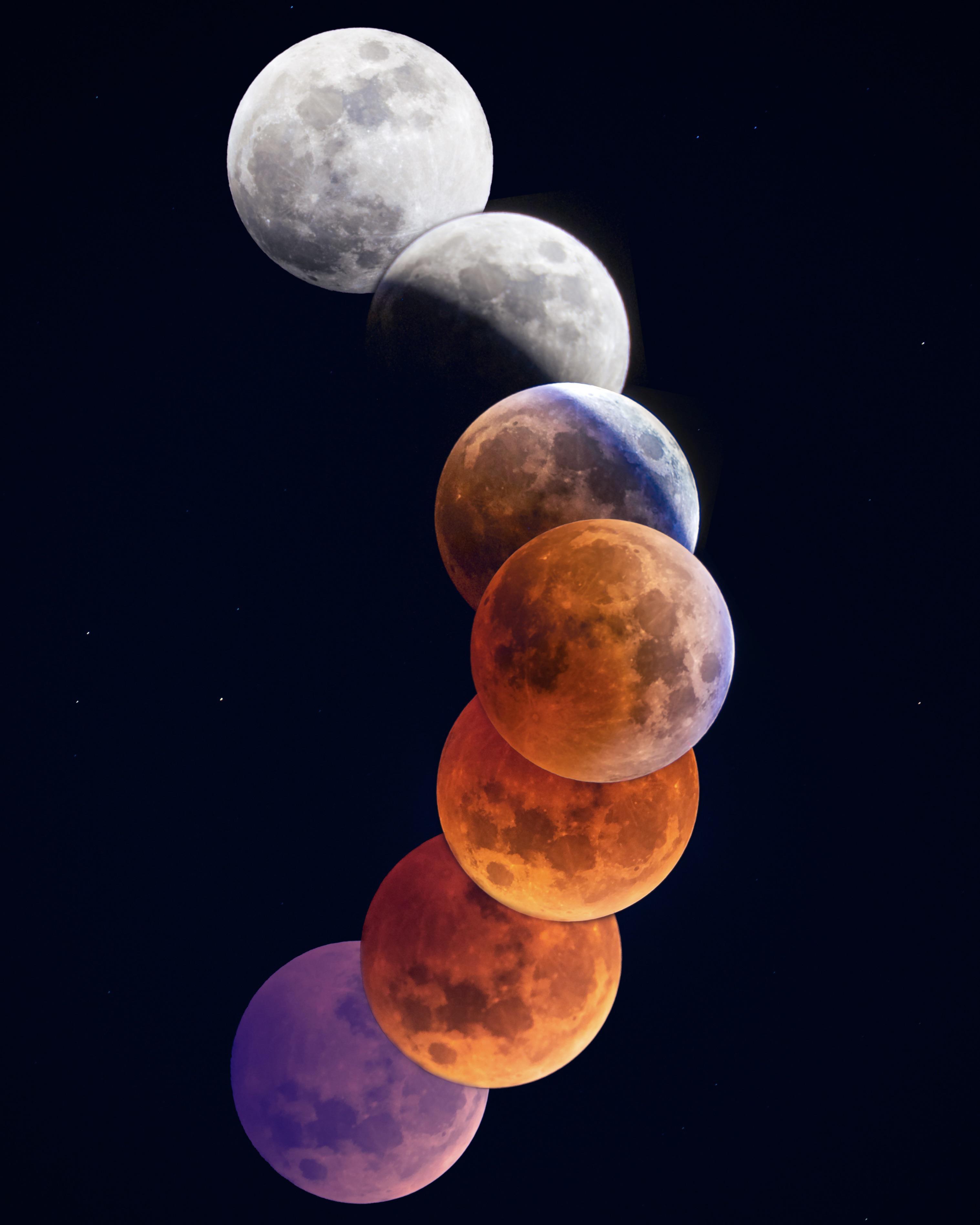Comments
Baurusdavinci t1_ix57wq7 wrote
Not sure what the downvotes are for, this is awesome! Thanks for explaining the cause of the red tint on the moon, that’s the exact question I was going to ask.
AlarmClockBandit t1_ix5eup8 wrote
The moon doesn't move in a curve like that. It moves in a straight line (at least relative to us on the Earth as the viewer).
It would be a more accurate representation of the Earth's shadow if you stacked the images in a straight line.
_wanderloots OP t1_ix6s2o3 wrote
Yes this is true, but then you’d only get a single arc length, I used a more artistic rendition to illustrate a larger portion of the umbral curve 😊
_wanderloots OP t1_ix6s5yw wrote
Oh I didn’t even realize the downvotes. Not sure why either 🤷♂️ my other photos like this people seem to like. And no problem! Happy I could help explain 😊
checkeredmice t1_ix7nosq wrote
Thanks for explaining the red colour, might I also ask where the purple came from?
_wanderloots OP t1_ix8f3ky wrote
No problem! The purple arose due to the moon setting during the sunrise (the morning blue hour) so it picked up some more of the daylight colour

_wanderloots OP t1_ix4yx0a wrote
The Beaver Blood Moon 🌙 🦫, the last total lunar eclipse until 2025. (Timelapse link below)
A composite series of the Beaver Blood Moon from last week. An eclipse occurs when the sun moves behind the Earth, casting the Earth’s shadow on the surface of the moon. The red colour comes from light refracting through the Earth’s atmosphere and experiencing Rayleigh scattering.
This refraction and scattering is the cause of the bright red colour and also why sunrises and sunsets are colourful. You can think of the phenomenon as the sun casting infinite sunrises and sunsets onto the surface of the moon.
With this series, I tried to show the outline of the Earth’s shadow with the partially eclipsed moon to help visualize how eclipses occur. During this eclipse, the moon spent most of the time in totality (fully in the Earth’s shadow), so I tried to show how the last three moons are curved inwards from the partial eclipse and fully in the shadow. The last moon in the series was taken as the sun rose during the morning blue hour, which caused the purple/blue colour.
If you want to learn more about how I shot the eclipse, please check out my guide (https://wanderloots.com/how-to-photograph-the-lunar-eclipse/). If you would like to see the wide angle and telephoto timelapse of this eclipse shot over the skyline of Toronto, here is a link: https://youtu.be/lU6sKVJ24RI
I hope you like it and would love to hear your thoughts 🚀
Technique:
EXIF: Each moon is a single shot at f11, ISO 100, with shutter speeds ranging from 1/500 to 30s exposure.
Equipment: Sony a7iii, Sony 100-400 mm, Sony 1.4x teleconverter Skywatcher Star Adventurer Pro star tracker 2i